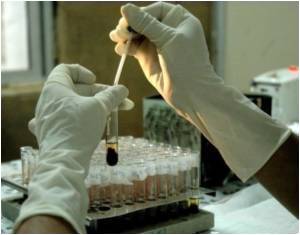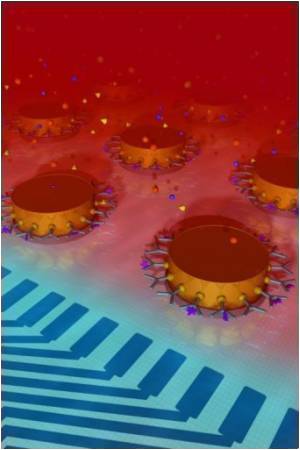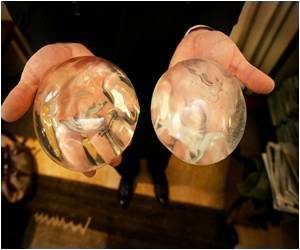
"After we have done this kind of pre-stretching to the nanotubes, they behave like springs and can be stretched again and again, without any permanent change in shape," Bao said.
Stretching the nanotube-coated silicone a second time, in the direction perpendicular to the first direction, causes some of the other nanotube bundles to align in the second direction. That makes the sensor completely stretchable in all directions, with total rebounding afterward.
Additionally, after the initial stretching to produce the "nano-springs," repeated stretching below the length of the initial stretch does not change the electrical conductivity significantly, Bao said. Maintaining the same conductivity in both the stretched and unstretched forms is important because the sensors detect and measure the force being applied to them through these spring-like nanostructures, which serve as electrodes.
The sensors consist of two layers of the nanotube-coated silicone, oriented so that the coatings are face-to-face, with a layer of a more easily deformed type of silicone between them.
The middle layer of silicone stores electrical charge, much like a battery. When pressure is exerted on the sensor, the middle layer of silicone compresses, which alters the amount of electrical charge it can store. That change is detected by the two films of carbon nanotubes, which act like the positive and negative terminals on a typical automobile or flashlight battery.
Advertisement
Whether the sensor is being compressed or extended, the two nanofilms are brought closer together, which seems like it might make it difficult to detect which type of deformation is happening. But Lipomi said it should be possible to detect the difference by the pattern of pressure.
Advertisement
Source-Eurekalert








